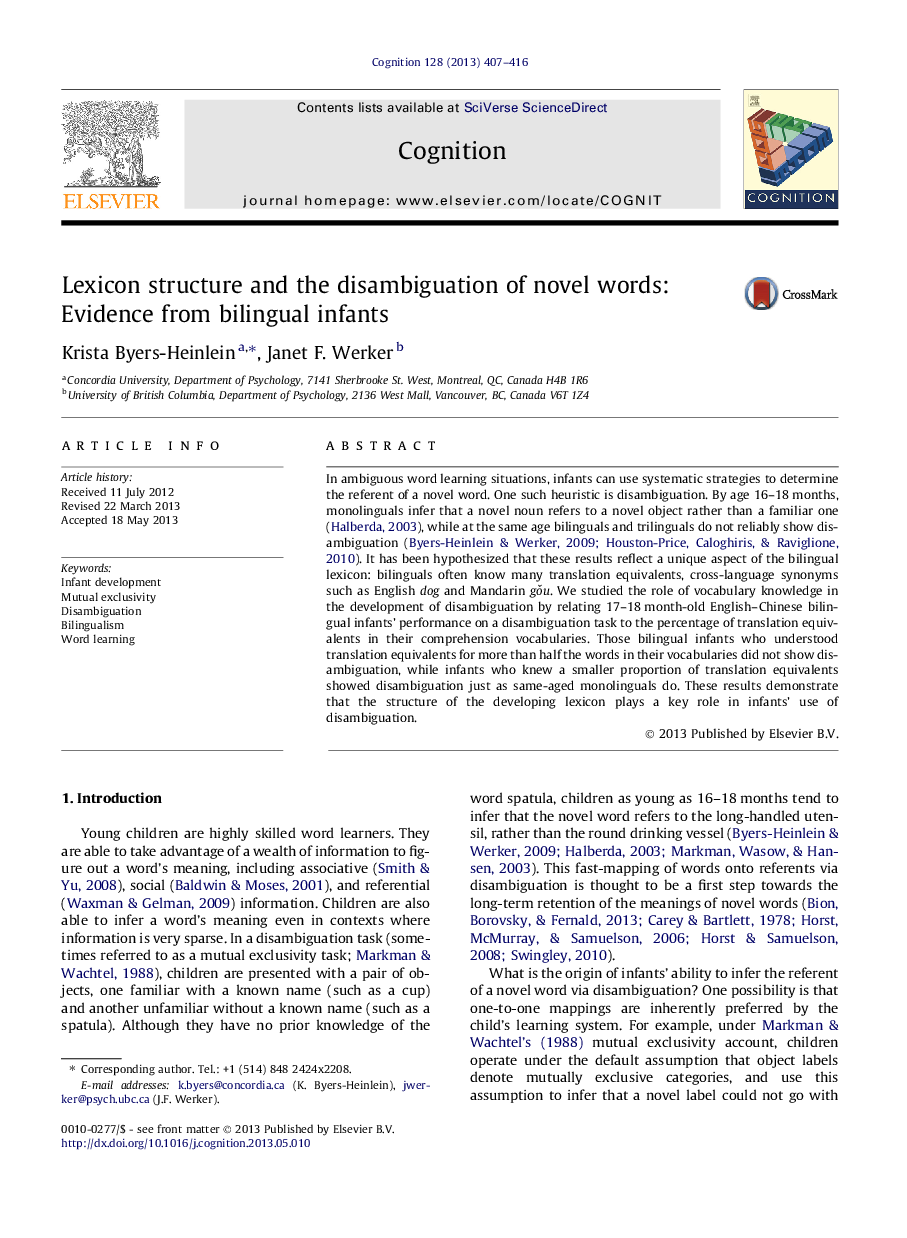| کد مقاله | کد نشریه | سال انتشار | مقاله انگلیسی | نسخه تمام متن |
|---|---|---|---|---|
| 10457622 | 921853 | 2013 | 10 صفحه PDF | دانلود رایگان |
عنوان انگلیسی مقاله ISI
Lexicon structure and the disambiguation of novel words: Evidence from bilingual infants
دانلود مقاله + سفارش ترجمه
دانلود مقاله ISI انگلیسی
رایگان برای ایرانیان
کلمات کلیدی
موضوعات مرتبط
علوم زیستی و بیوفناوری
علم عصب شناسی
علوم اعصاب شناختی
پیش نمایش صفحه اول مقاله

چکیده انگلیسی
In ambiguous word learning situations, infants can use systematic strategies to determine the referent of a novel word. One such heuristic is disambiguation. By age 16-18Â months, monolinguals infer that a novel noun refers to a novel object rather than a familiar one (Halberda, 2003), while at the same age bilinguals and trilinguals do not reliably show disambiguation (Byers-Heinlein and Werker, 2009, Houston-Price et al., 2010). It has been hypothesized that these results reflect a unique aspect of the bilingual lexicon: bilinguals often know many translation equivalents, cross-language synonyms such as English dog and Mandarin gÇu. We studied the role of vocabulary knowledge in the development of disambiguation by relating 17-18Â month-old English-Chinese bilingual infants' performance on a disambiguation task to the percentage of translation equivalents in their comprehension vocabularies. Those bilingual infants who understood translation equivalents for more than half the words in their vocabularies did not show disambiguation, while infants who knew a smaller proportion of translation equivalents showed disambiguation just as same-aged monolinguals do. These results demonstrate that the structure of the developing lexicon plays a key role in infants' use of disambiguation.
ناشر
Database: Elsevier - ScienceDirect (ساینس دایرکت)
Journal: Cognition - Volume 128, Issue 3, September 2013, Pages 407-416
Journal: Cognition - Volume 128, Issue 3, September 2013, Pages 407-416
نویسندگان
Krista Byers-Heinlein, Janet F. Werker,